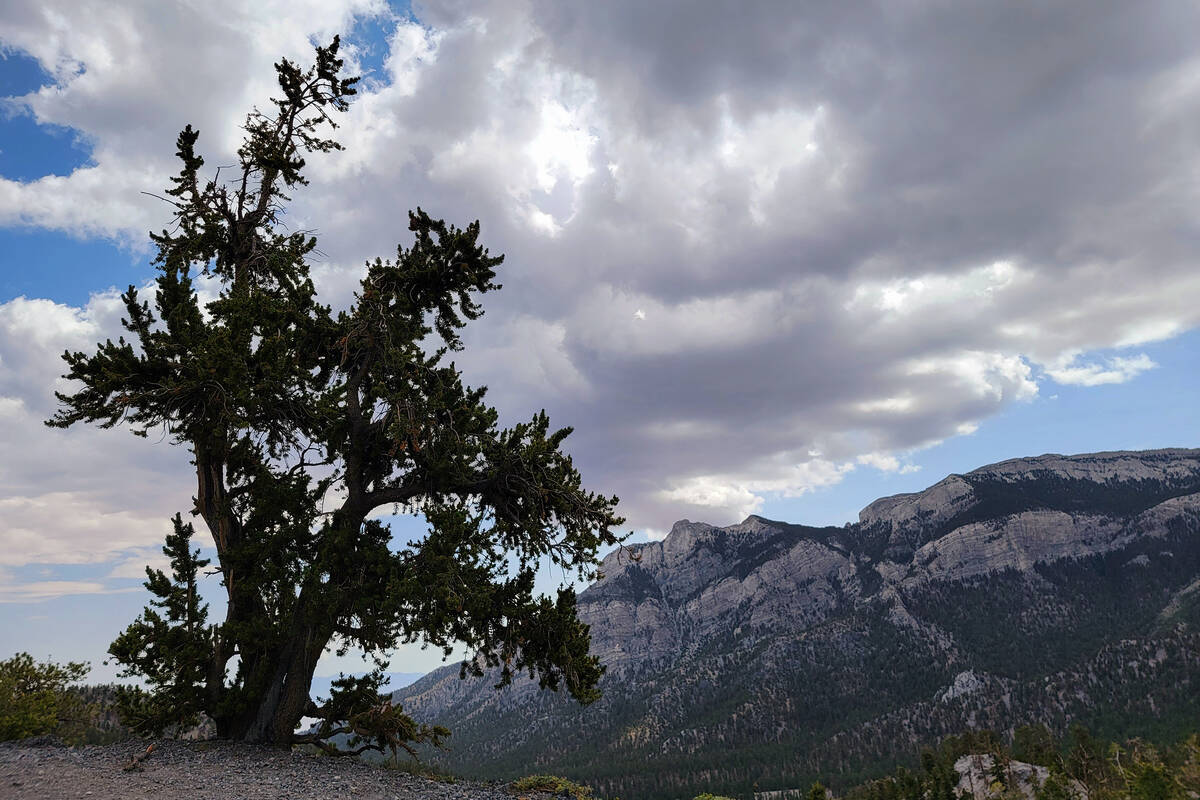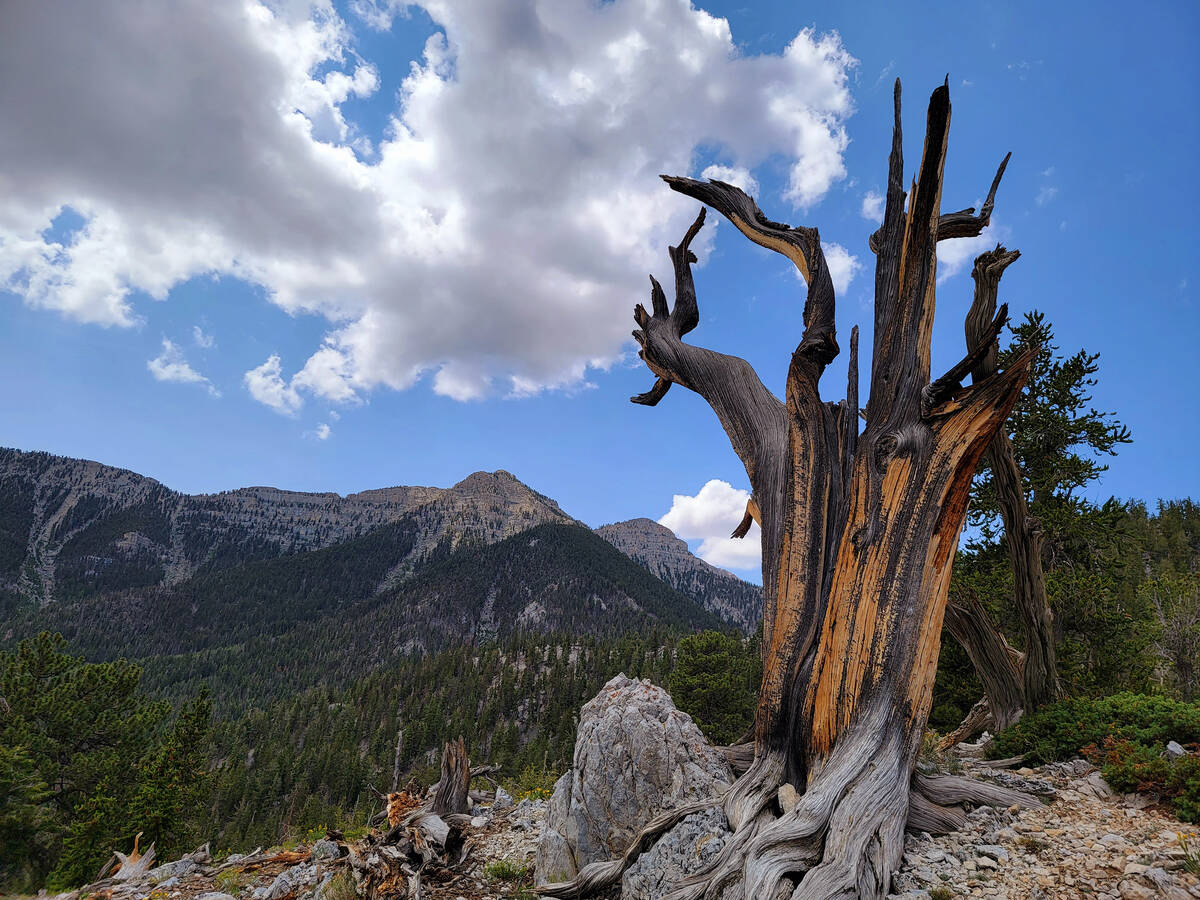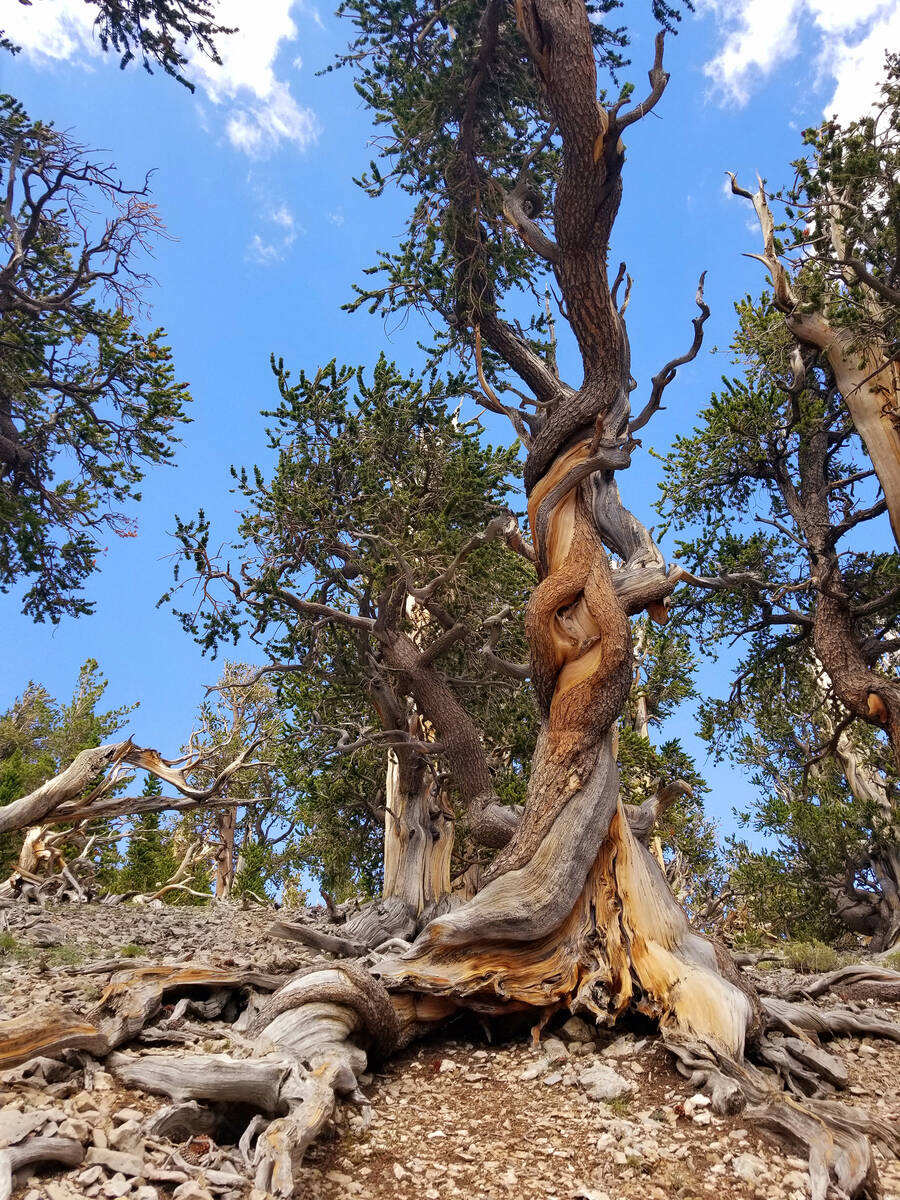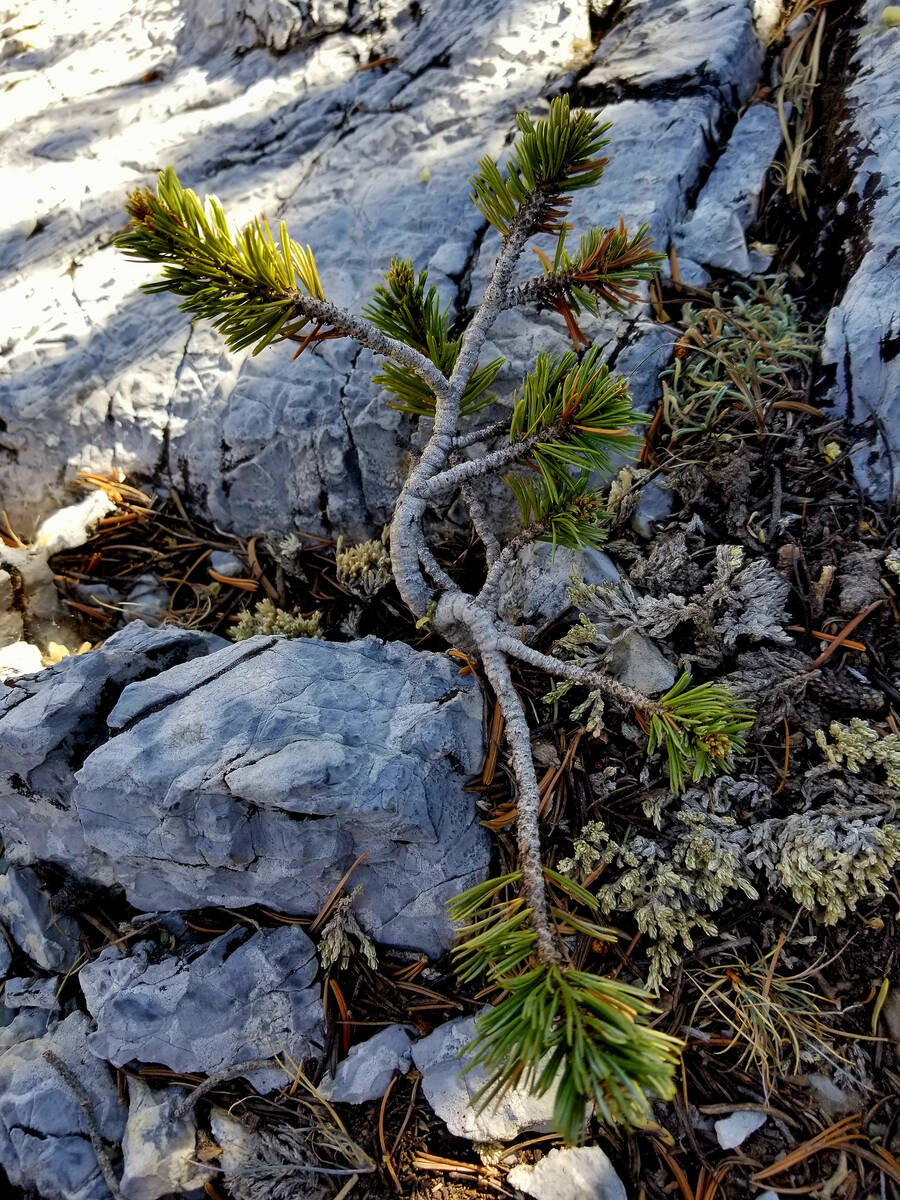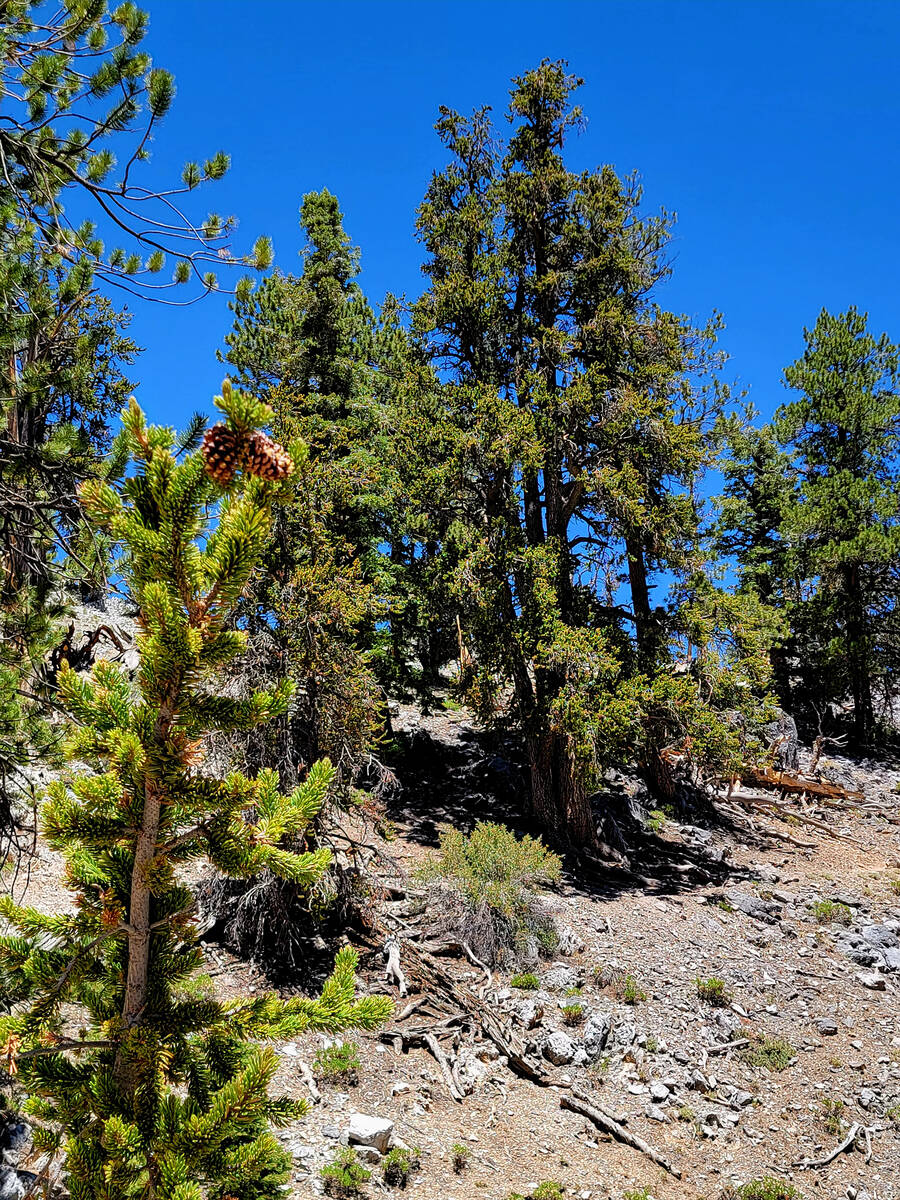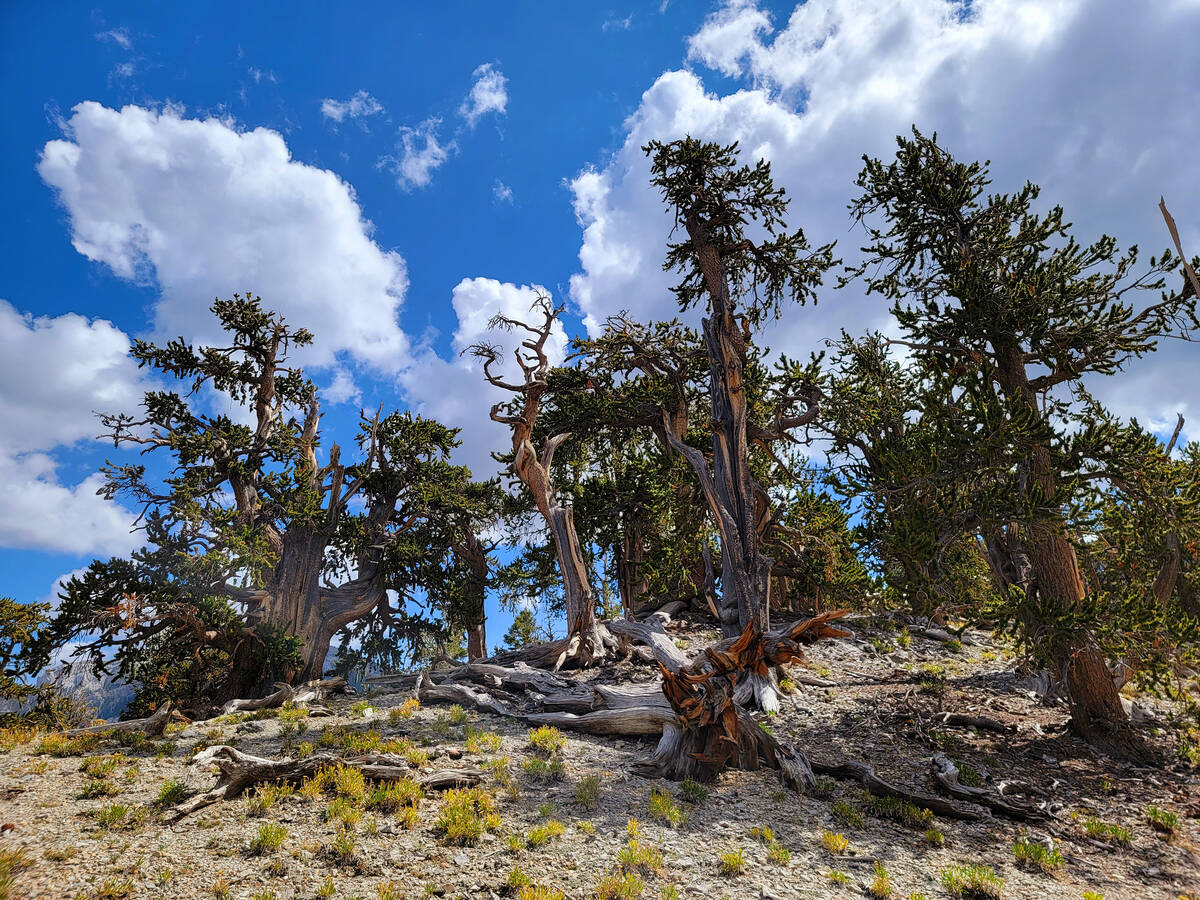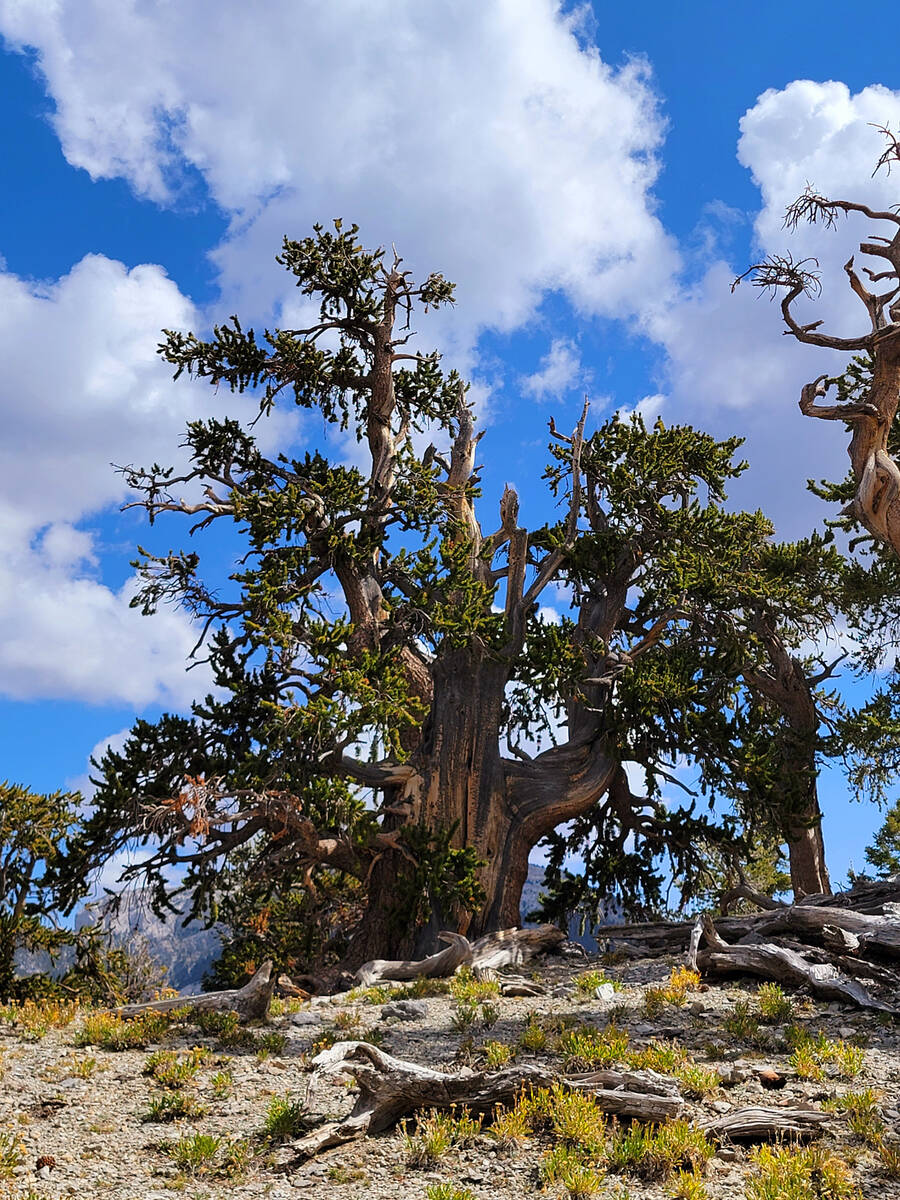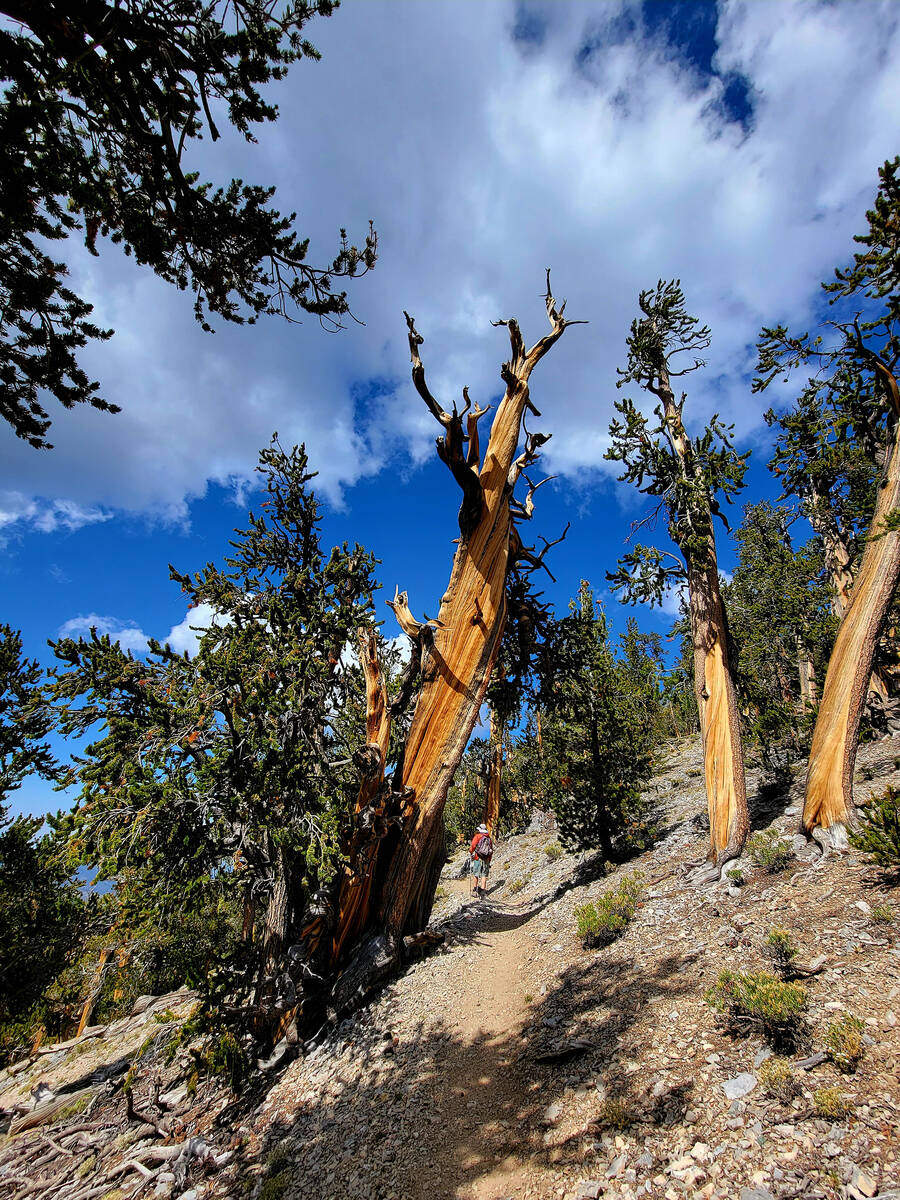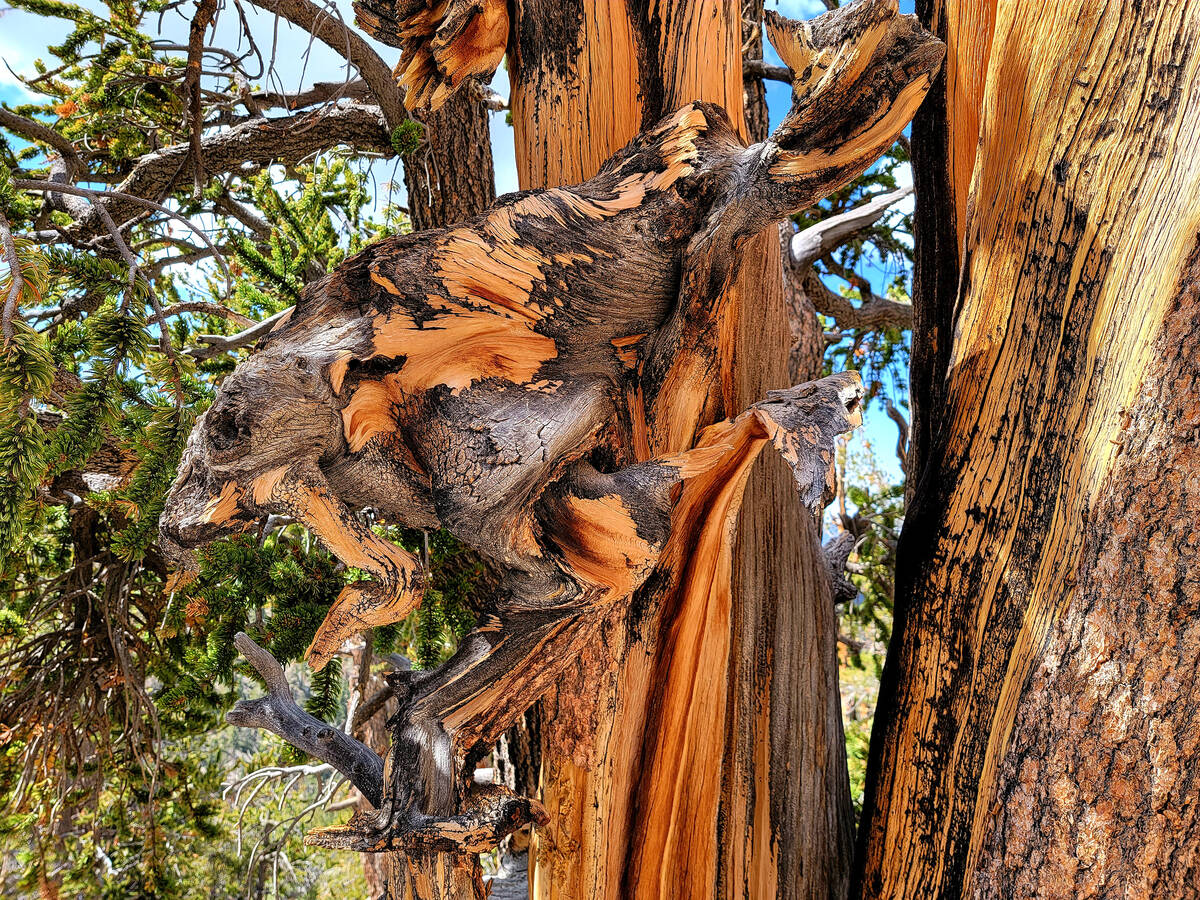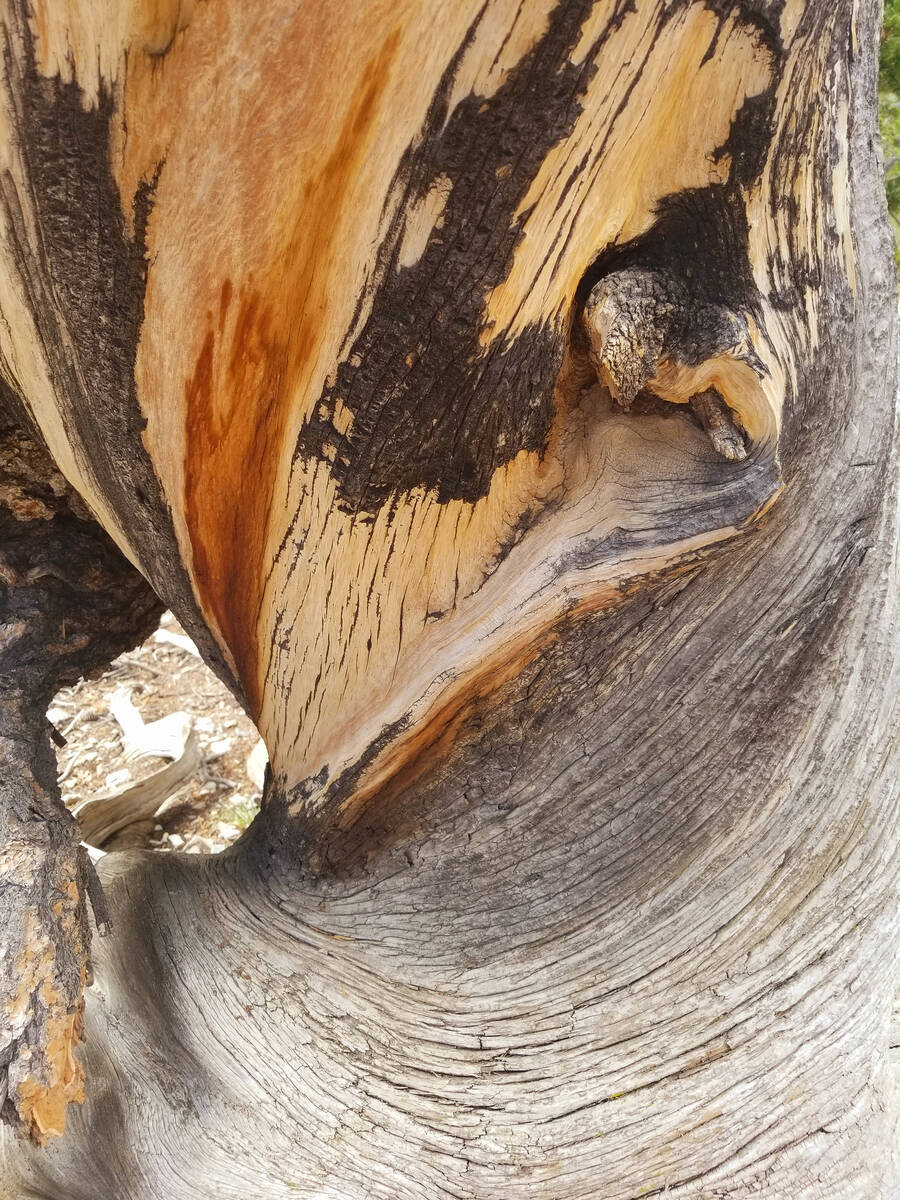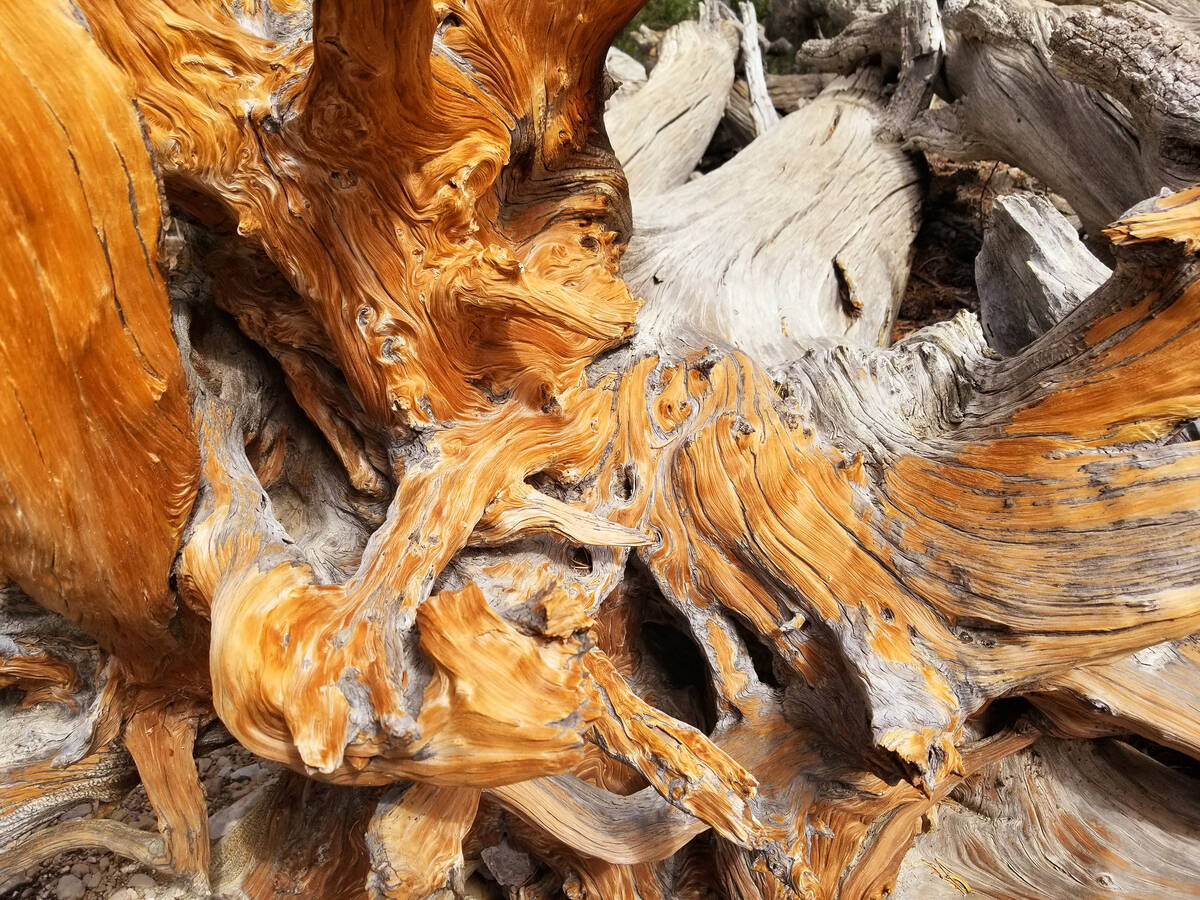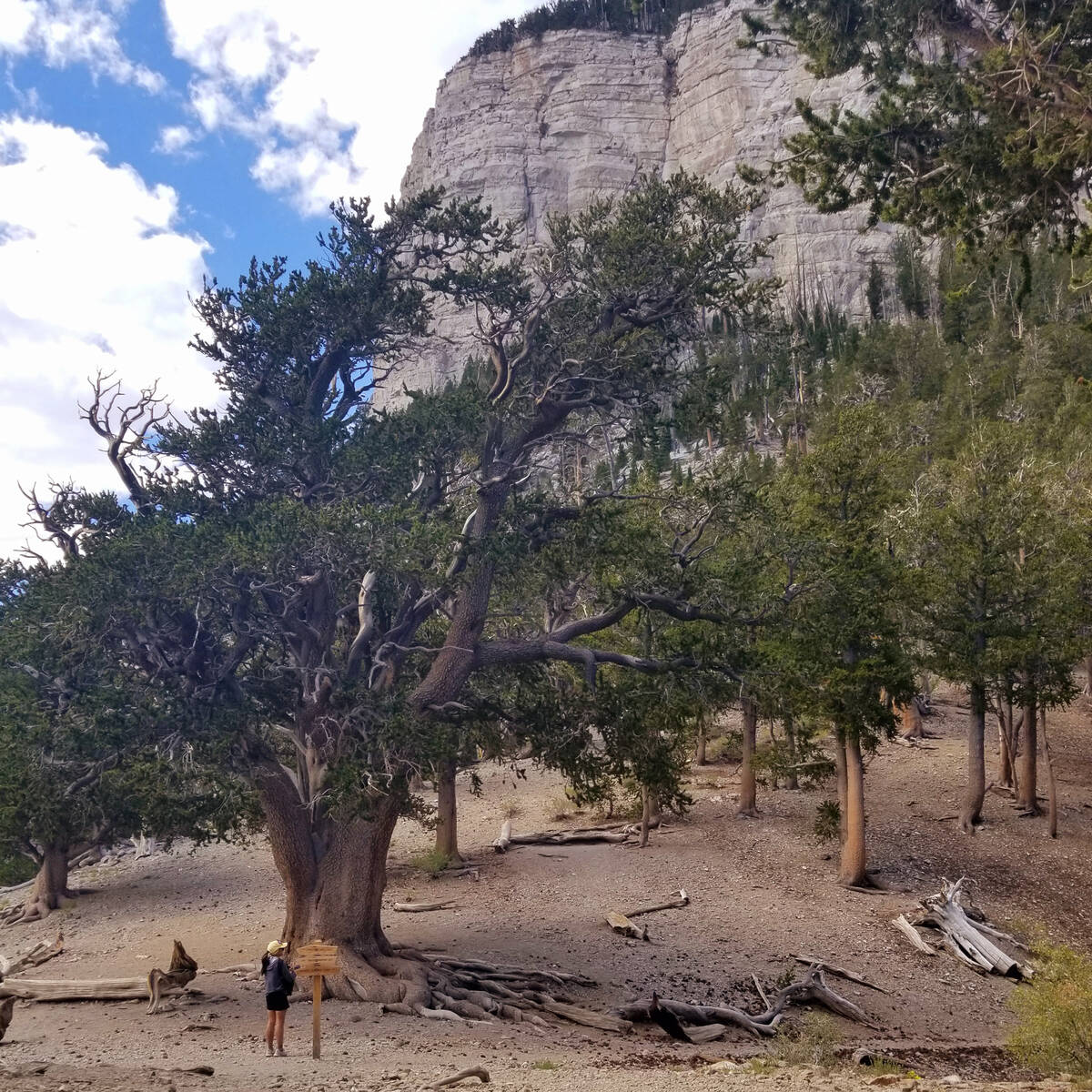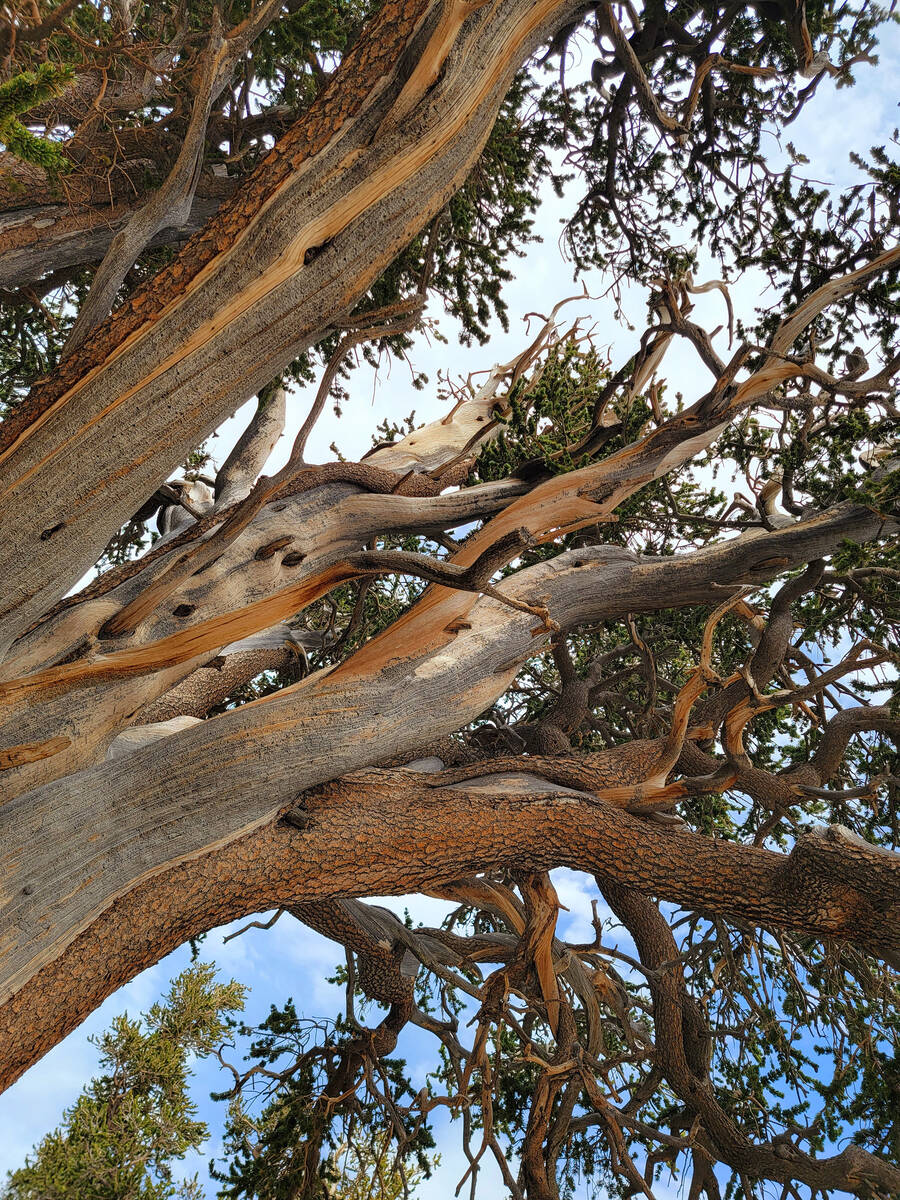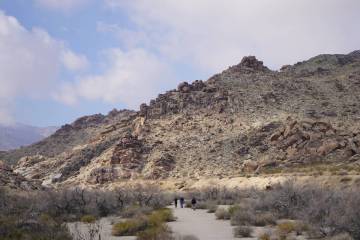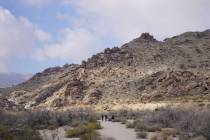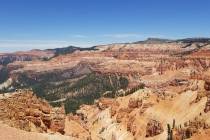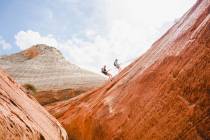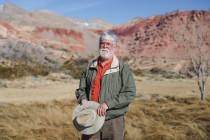Hiking among Mount Charleston’s bristlecone pines — PHOTOS
Great Basin bristlecone pines are gnarly, twisted tales of survival and inspiration. Lucky for local desert dwellers, hiking paths wind past these ancient, animated trees high above the valley floor.
Bristlecones can be found at elevations above 7,200 feet in the Mount Charleston area along multiple trails in the Spring Mountains National Recreation Area. The higher up hikers go, the weirder looking the bristlecones become. Reaching the gnarliest ones means a grueling hike of at least 3 miles and gains in elevation of more than 1,500 feet.
Strange, spectacular, twisted, haunting, fanciful and otherworldly all work well to describe old trees clinging to rocky slopes where winds blow fiercely. Their exposed roots look at times like talons about to lose their tenuous grip on life. Yet still they stand. Bristlecones grow where little else can handle unfriendly soils, arid conditions, wicked storms and other hardships.
These extraordinary trees aren’t unique to Mount Charleston. They also grow at high elevations in Utah, California and elsewhere in Nevada. Great Basin National Park, about 300 miles northeast of Las Vegas, was established in part because of its bristlecone groves. Many individual trees at Mount Charleston and elsewhere have been around for thousands of years. A California tree named Methuselah and another dead one named Prometheus at Great Basin park, both with lives spanning nearly 5,000 years, have given the Great Basin bristlecone its current distinction as the world’s oldest known tree.
“The oldest bristlecones in the Spring Mountains have not been cored to determine their age but have the potential to be as old as any in the world,” said Julie Wallis, a U.S. Forest Service botanist for the Spring Mountains National Recreation Area. “In fact, the Spring Mountains host the single largest known bristlecone pine. That world-record tree is in treacherous terrain far from any trail.” Its exact location is kept a secret.
Bristlecone hiking routes
Although the most picturesque and ancient bristlecones at Mount Charleston are found close to the 10,000-foot elevation mark, there are starkly beautiful trees standing just above 9,000 feet on wide, rocky ridges along the moderately challenging North Loop and Upper Bristlecone trails. Those groves can be reached after about 2 miles of hiking.
Upper Bristlecone Trail, which begins at the end of the parking lot for Lee Canyon ski area, offers the easiest access to these stunning trees. Just yards from the trailhead, an informational panel shares tips about identifying bristlecones with their needles set in bundles of five and bunched together in a bottlebrush shape. At the path’s start, younger bristlecones are a brighter green and have a more standard pine profile. They hardly stand out. But as hikers gain in elevation, they approach an exposed ridge with spectacular views. There, older bristlecones begin twisting and appearing only partially alive with skeletal driftwood looks complete with stripes, swirls and patches of gray, honey, auburn, brown and beige. Each wears its memorable look differently. After spending some time among the bristlecones, many hikers return to the parking lot, rather than completing the 6-mile Bristlecone Trail.
The North Loop trailhead along Deer Creek Road has similarly manageable out-and-back access to a bristlecone forest at about 9,300 feet. But an ascent of another 700 feet in elevation via a series of brutal North Loop switchbacks will give hikers a chance to admire the legendary Raintree, which has an estimated age of 3,000 years. Hikers will also pass alongside dozens of other ancient bristlecones.
An alternate approach we took in July to see the Raintree was hiking 2 steep miles up Trail Canyon to the North Loop junction, where we then took a right and headed east for another 1½ miles. En route, we passed through a gallery of trees, some thousands of years old, and admired the Great Basin bristlecone pine’s audacity in turning itself into sculpture while responding to centuries of wind and harsh weather. Along the North Loop trail, we appreciated spectacular mountain views across Kyle Canyon and marveled at the rugged steepness of rocky slopes that bristlecones call home.
“You can find the large bristlecones at higher elevations along the North Loop Trail and South Loop Trail,” Wallis said. “Any hike to reach the inhospitable, high-elevation habitat of the ancient bristlecones is strenuous and should be planned with water, food, and a clear weather forecast.”
Survival specialists
That inhospitable, high-elevation habitat helps to explain the bristlecone’s staying power. It’s been able to live long and avoid wildfire for centuries in part because of its relative isolation in an environment with sparse vegetation to fuel fires. A couple of other secrets to the Great Basin bristlecone pine’s longevity include its dense, slow-growing wood that blocks out many natural threats, including insects and rot. And the trees are able to compartmentalize death, so that a problem within one part of the tree doesn’t become systemic trouble. One branch might die while the rest of the tree survives, an adaptation that also adds to the bristlecone’s complex beauty.
Great Basin bristlecone pines have made headlines recently. Hundreds of dead bristlecones were a surprise discovery near Telescope Peak in Death Valley National Park in 2018. In a study published this year, researchers concluded that the West’s prolonged drought had weakened these survival specialists and left them vulnerable to bark beetle infestations. Up to that point, bristlecones were thought to have been mostly immune because of their adaptations. Wallis confirmed drought stress and greater threats of wildfire are concerns for the Spring Mountains trees.
For millennia, tenacity and fortitude have been forces supporting the Great Basin bristlecones that continue standing in the same high-altitude spots where mountains meet sky at Mount Charleston. A chance to walk among the strange yet stately Southern Nevada trees provides inspiration and historical perspective.
“I think they are just exceptional,” Wallis said, “and I love to stop and wonder what they’ve seen over thousands of years.”



